
MOHS skala tvrdoće
 Mohsova ljestvica tvrdoće je relativna mjera otpornosti minerala ili dragog kamena na ogrebotine. Kao glavni alat u gemologiji, Mohsova ljestvica je važna za identifikaciju dragog kamenja i sprječavanje njihovog oštećenja.
Mohsova ljestvica tvrdoće je relativna mjera otpornosti minerala ili dragog kamena na ogrebotine. Kao glavni alat u gemologiji, Mohsova ljestvica je važna za identifikaciju dragog kamenja i sprječavanje njihovog oštećenja.
Odakle dolazi naziv skale tvrdoće minerala?
Njemački mineralog i geolog Freidrich Mohs stvorio je Mohsovu ljestvicu 1812. godine. U to vrijeme, većina klasifikacija minerala bila je ograničena na kemijski sastav. Dok je drevni učenjak Teofrast prvi usporedio tvrdoću dragulja 300. godine prije Krista, Mohs je stvorio prvi službeni klasifikacijski popis.
Mohs je uspostavio 10 rangiranja: 1 kao najniže i 10 kao najviše. Opće je poznato da je dijamant najtvrđi kamen na svijetu, pa ga je koristio za predstavljanje broja 10. Odatle je prikupio još 9 lako dostupnih minerala s različitim razinama tvrdoće kako bi uspostavio svako rangiranje.
Iako Mohsova skala tvrdoće nije savršena, praktičan je i neophodan alat za svakog gemologa ili entuzijasta.
U ovom ćemo vodiču objasniti zašto je Mohsova ljestvica tvrdoće važna, kako je možete koristiti i gdje se svaki dragi kamen nalazi na njoj - od najmekših minerala do najtvrđih. Za početak, evo kratkog pregleda MOHSove ljestvice tvrdoće:
1: Talk
2: Gips
3: Kalcit
4: Fluorit
5: Apatit
6: Feldspat
7: Kvarc
8: Topaz
9: Korund
10: Dijamant
A sada, o ostatku!
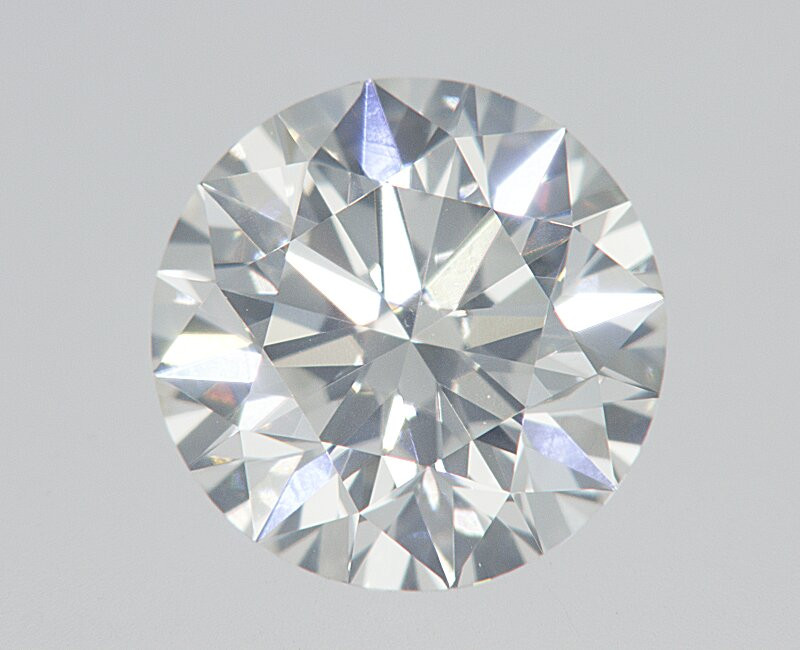
Kolika je tvrdoća minerala?
Znate da se tvrdoća odnosi na grebanje, ali kako definiramo ogrebotinu?
Prema Mohsovoj ljestvici tvrdoće, "ogrebotina" je trajni, vidljivi nedostatak (ili "iščašenje"). Ako je žilavost kamena (koji je sljedeći prekriven) elastičnija i nakon toga se vraća u svoj izvorni oblik i izgled, tada to nije ogrebotina prema Mohsovoj ljestvici.
Kada mineral A može nadmašiti mineral B, mineral A će biti rangiran više od minerala B.
Dakle, je li mineral s 8. razinom tvrdoće dvostruko tvrđi od minerala s 4. razinom tvrdoće? Ne, ali to je uobičajena zabluda! U stvarnosti, Mohsova skala je kvalitativna ordinalna skala.
Kvalitativna - što sad? „Kvalitativna“ ljestvica koristi osobine za opisivanje nečega što se ne može izbrojiti, a ne numeričku mjeru. „Ordinalne“ ljestvice su poredane po rangu. Svaka razina je jednostavno viša ili niža od druge - ne možete ih precizno usporediti s brojevima.
U osnovi, ocjene od 1 do 10 na skali mogle bi se zamijeniti s AJ i u biti funkcionirale isto.
Za usporedbu, tvrdoća safira je 9, ali safiri su 2 puta tvrđi od topaza (8 na Mohsovoj ljestvici tvrdoće) i 4 puta mekši od dijamanta (10).

Jedinstvene razine tvrdoće
Osnovne vrijednosti tvrdoće Mohsove ljestvice od 1 do 10 ne odnose se na sve minerale i postoje neke nepravilnosti na koje možete naići.
Prvo, možete vidjeti međuvrijednosti poput tvrdoće smaragda od 7,5.
Srednje ocjene su jednostavno specifičnije ocjene na ljestvici. U slučaju smaragda, on je niži od tvrdoće plavog topaza od 8, ali viši od tvrdoće ružičastog kvarca od 7.
Još jedna nepravilnost koju možete vidjeti je raspon tvrdoće .
Na primjer, tvrdoća opala je od 5 do 6,5. Zašto? Opali imaju različit sadržaj vode, što njihov sastav čini nekonzistentnim. Budući da kemijski sastav može utjecati na tvrdoću, tri različita opala mogu biti 5, 6 i 6,5.
Drugi faktor koji može utjecati na Mohsovu tvrdoću dragog kamenja jest utjecaj vremenskih uvjeta. Ako okolišni utjecaji (npr. vjetar, kiša, bakterije itd.) istroše mineral, on može postati mekši.
Konačno, na istom kristalu možete vidjeti različite razine tvrdoće.
Kristali cijanita , na primjer, imaju tvrdoću 5 na jednoj osi i 7 na okomitoj osi. Različite razine tvrdoće nastaju jer jedna os ima slabije molekularne veze od druge.
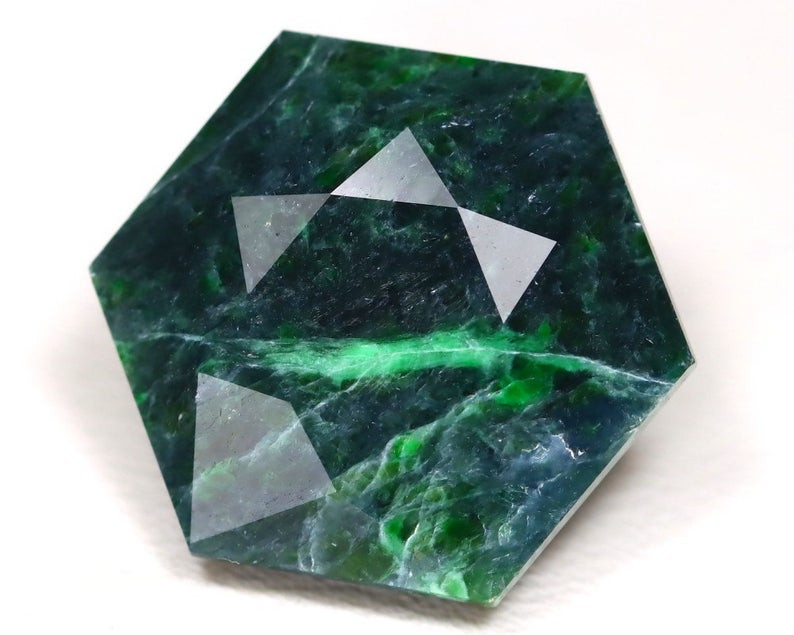
Tvrdoća vs. žilavost
Većina ljudi je čula da su dijamanti najjači kamen, ali je li to istina? Dijamant ima Mohsovu ljestvicu 10, što ga čini najtvrđim mineralom na svijetu.
Međutim, najtvrđe ne znači nesalomljivo, jer Mohsova skala nije skala žilavosti.
Žilavost (ili čvrstoća) opisuje otpornost minerala na lomljenje ili krhotine.
Dijamanti imaju krhku žilavost, što znači da se lako lome. Postoji uobičajena izreka: Čelični čekić ne može ogrebati dijamant, ali može slomiti dijamant.
Usporedimo dijamante s žadom od žada. Tvrdoća žada je 6,5-7, pa ga je lakše ogrebati nego dijamant. Međutim, žad je tvrđi od dijamanta, pa je lakše razbiti dijamant nego žad.
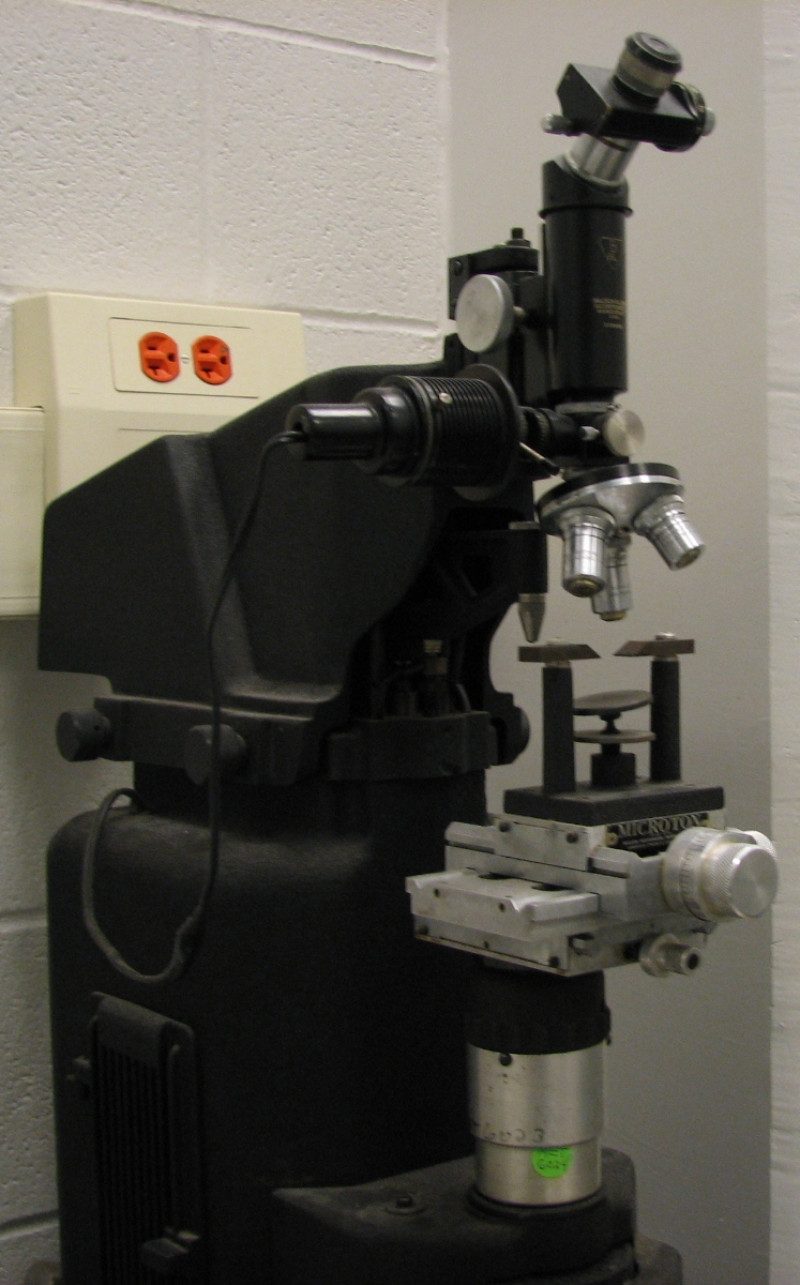 Slika: Vickersov mjerač tvrdoće
Slika: Vickersov mjerač tvrdoće
Mohsova skala tvrdoće u odnosu na druge skale tvrdoće
Mohsova ljestvica nije jedina ljestvica tvrdoće dragog kamenja. Alternativne ljestvice uključuju Rockwellovu, Vickersovu, Knoopovu, Shoreovu i Brinellovu. Svaka ljestvica je najkorisnija za određene vrste materijala. Najpopularnije su Rockwellova i Vickersova.
Rockwellov test koristi "stroj za diferencijalnu dubinu" za otkrivanje tvrdoće udubljenja. Mjeri koliko duboko udubljenje ide, na temelju ostavljanja početnog opterećenja, blago povećanog opterećenja, a zatim većeg opterećenja. To je najtočniji test tvrdoće, ali zahtijeva naprednu opremu.
Vickersov test je test mikrotvrdoće ili mikroudubljenja, najbolji za tanke ili male uzorke. Vickersov proces također mjeri dubinu udubljenja, ali mnogo manja udubljenja. Međutim, test zahtijeva glatke, polirane uzorke, naprednu opremu i izračune.
Mohsov test najčešće koriste gemolozi i entuzijasti jer je pristupačniji, ne zahtijeva naprednu opremu ili izračune i najlakši je za razumjeti.
Vratimo se na Mohsovu mineralnu ljestvicu, da vidimo gdje se nalazi svaki dragi kamen!
Mohsova skala tvrdoće
Najmekši mineral na Mohsovoj ljestvici je talk. Odatle imamo standardnu referencu za minerale od najmekših do najtvrđih:

Naravno, postoji više od deset vrsta minerala. Osim toga, predmeti koji nisu drago kamenje poput metala, noktiju, novčića i stakla također imaju mjere tvrdoće.
Pogledajmo kompletnu ljestvicu tvrdoće - minerale, drago kamenje i ostale predmete - od najmekše do najtvrđe:
1: Talk
1 - 2: Grafit, Molibdenit, Pirofilit
1 - 3: Boksit
1 - 5,5: Limonit
1,5 - 2,5: Sumpor
2: Gips, Silvit, Glaukonit
2 - 2,5: Halit, Cinober, Klorit, Nokat
2 - 3: Moskovljanin
2,5 - 2,75: Galenit
2,5 - 3: Srebro, Zlato, Bakar, Halkocin, Biotit
2,5 - 3,5: Barit
3: Kalcit, bakreni lim
3 - 3.25: Bornit
3 - 3,5: Viterit, Anhidrit
3 - 4: Vanadinit
3 - 5: Serpentin
3.5 - 4: sfalerit, rodokrozit, pirotin, malahit, dolomit, kuprit, halkopirit, azurit
3,5 - 4,5: Siderit
3,5 - 5: Magnezit
4: Fluorit
4 - 7: Staklo, Čavao
4,5 - 7: Kijanit
4,5 - 5,5: Volastonit
5: Apatit
5 - 5,5: Titanit, Monazit
5 - 6: Uraninit, Tirkiz, Ilmenit, Hornblenda, Enstatit
5 - 6,5: Magnetit, Oštrica noža, Čelična turpija
5 - 7: Ploča s prugama
5,5 - 6: Sodalit, Nefelin, Kromit, Augit, Arsenopirit
5,5 - 6,5: Hematit, Rodonit, Diopsid
6: Feldspat
6 - 6,5: Rutil, Pirit, Prenit, Nefrit Žad
6 - 7: Zoisit, Epidot, Kasiterit
6 - 7,5: Markazit
6,5 - 7: Spodumen, Olivin (Peridot), Žadeit, Žad, Kalcedon
6,5 - 7,5: Silimanit, Granat
7: Kvarc
7 - 7,5: Turmalin, Staurolit, Kordierit (Iolit)
7,5: Cirkon, Euklas
7,5 - 8: Beril
8: Topaz, Spinel
8.5: Krizoberil
9: Korund (rubin, safir)
10: Dijamant
Ne vidite određeni dragi kamen na popisu? Provjerite njegovu mineralnu porodicu!
Na primjer, tvrdoća jaspisa je 6,5-7, ista kao i kod svih kalcedona . Neke porodice su složenije, poput feldspata. Tvrdoća labradorita , na primjer, je 6-6,5, za razliku od standardnih 6 za većinu feldspata.

Zašto je Mohsova skala važna?
Recimo da idete na putovanje i nosite nakit od dragog kamenja - možda ogrlicu s ametistom , dijamantne naušnice i prsten s fluoritom. Sav nakit stavite u jednu vrećicu i ubacite je u kofer. Ali oh ne! Nakon raspakiranja vidite da su vam fluorit i ametist izgrebani.
Gornji scenarij je jedan primjer zašto je poznavanje tvrdoće bilo kojeg dragog ili poludragog kamenja korisno za sve ljubitelje nakita. Da ste znali da je tvrdoća ametista niža od dijamanta, a oba su tvrđa od fluorita, mogli ste spriječiti ogrebotine odvojenim skladištenjem.
Još jedno područje gdje je poznavanje tvrdoće dragulja ključno je lapidarni rad (rezanje dragulja).
Lapidaristi ne mogu samo odabrati najljepši fasetirani rez - moraju planirati rez prema tvrdoći, žilavosti i cijepanju dragulja. Savršeno cijepanje, niska žilavost i niska tvrdoća mogu otežati poliranje i oblikovanje dragulja, stoga su pravilna tehnika lapidiranja i stručnost ključni.
Treća važna upotreba Mohsove skale tvrdoće je identifikacija.
Recimo da ste entuzijast za kamenje ili drago kamenje koji traži dragulje (ili "rockhounding") u Kaliforniji, SAD. Uočite zeleni mineral za koji mislite da bi mogao biti žad - vrijedan dragulj! Nadajući se da ćete ga unovčiti, nosite ga gemologu. Vaše nade tonu kada gemolog otkriva da to nije žad već verdit, još jedan zeleni dragulj s puno nižom vrijednošću.
Poštedjeli biste si vrtlog emocija da ste ponijeli vlastite alate za ispitivanje tvrdoće!
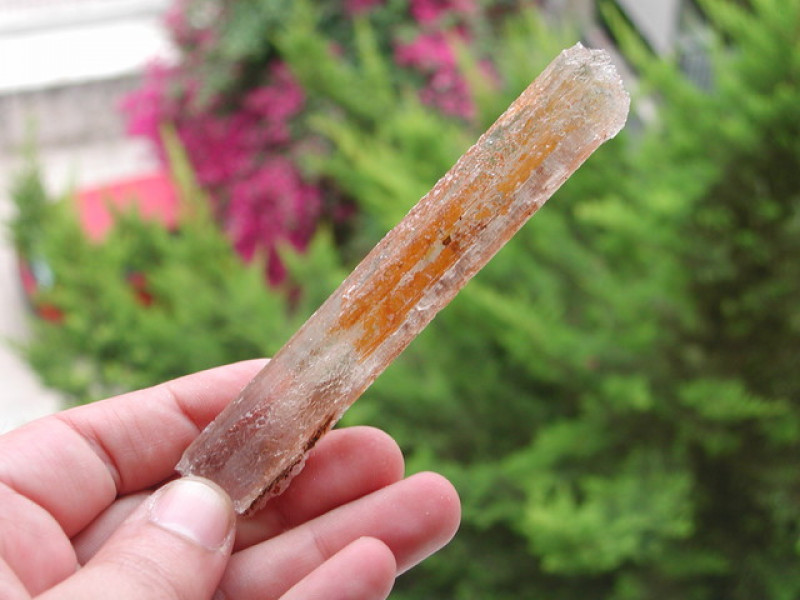
Kako testirati tvrdoću minerala
Ispitivanje tvrdoće jednostavan je prvi korak za identifikaciju na terenu. Koji se alati koriste za ispitivanje tvrdoće minerala?
Standardni Mohsov komplet za ispitivanje tvrdoće ima podijeljenu posudu s 9 mjesta, od kojih svako sadrži grube kristale prvih 1-9 minerala tvrdoće: talk, gips, kalcit, fluorit, apatit, feldspat, kvarc, topaz i korund. Dijamanti su skupi, pa se obično izostavljaju.
Druga mogućnost je set oštrih metalnih čačkalica za tvrdoću. Ove čačkalice s dva kraja često su označene bojom i stupnjem tvrdoće. Čačkalice za tvrdoću su kompaktnije i bolje za precizno, manje uočljivo rezane ogrebotine. Ali su skuplje od standardnih setova za testiranje.
Test tvrdoće korak po korak
Spremni postati Mohsov ispitivač tvrdoće? Krenimo!
Pripremite svoj komplet za testiranje, uzorak nepoznatog minerala, Mohsovu tablicu tvrdoće i bilježnicu za bilježenje rezultata. Ako ste u zatvorenom prostoru, provedite test na radnom stolu (ne na lijepom namještaju) s čvrstom oblogom poput gume.
Korak 1: Ogrebite uzorak noktom.
Nokti na rukama imaju tvrdoću 2-2,5, pa ako ostave ogrebotinu, suzili ste izbor na minerale između 1-2,5. Nakon toga, grebite gipsom, a zatim talkom.
Nema ogrebotine? Prijeđite na korak 2.
Korak 2: Zagrebite uzorak gipsom ili grebalicom s tvrdoćom 2 stupnja.
Držite nepoznati uzorak jednom rukom dok leži na stolu. Donju stranu uzorka (ili bilo koje neupadljivo, ravno područje) možete ostaviti okrenutom prema gore kako biste je grebali.
Uzmite mineral ili sondu za ispitivanje tvrdoće i prislonite oštar rub na uzorak. Držeći uzorak na mjestu, čvrsto povucite mineral za ispitivanje preko uzorka. Radi sigurnosti, povucite ga od tijela.
Obrišite svu prašinu dragog kamenja i provjerite ima li ogrebotina. Trebalo bi imati vidljivu udubinu, pa po potrebi upotrijebite povećalo.
Još uvijek nema ogrebotine? Idi na korak 3.
Korak 3: Nastavite testiranje sa svakim sljedećim odabirom minerala ili tvrdoće.
Slijedite upute iz koraka 2, ali s materijalom na 3 razine, zatim s materijalom na 4 razine i tako dalje dok ne vidite ogrebotinu.
Kada vidite ogrebotinu, zabilježite koji je mineral napravio ogrebotinu i njegovu tvrdoću. Možete provjeriti tako da povučete uzorak uz svoj mineral, koji ne bi trebao ostaviti ogrebotinu. Nakon toga možete pogledati svoju Mohsovu tablicu tvrdoće kako biste vidjeli koji bi mineral mogao biti vaš uzorak. Još uvijek niste sigurni? Provedite druge testove za identifikaciju kako biste suzili izbor.
Profesionalni savjeti za testiranje
Evo još nekoliko savjeta za osiguravanje pravilnog ispitivanja tvrdoće:
Uvijek provjerite ima li u ogrebotini udubljenja, ne samo crte.
Pokušajte odabrati barem srednje velike uzorke za testiranje.
Ako sumnjate da je nepoznati primjerak možda pretrpio vremenske uvjete, pronađite slomljeni komad s najboljim sjajem za grebanje.
Uključci ili površinske nepravilnosti mogu uzrokovati zbunjujuće rezultate. Ako mislite da je to slučaj, ogrebite drugo područje uzorka.
Ne zaboravite da test grebanja uvijek možete napraviti više puta!
S tim, spremni ste za testiranje!
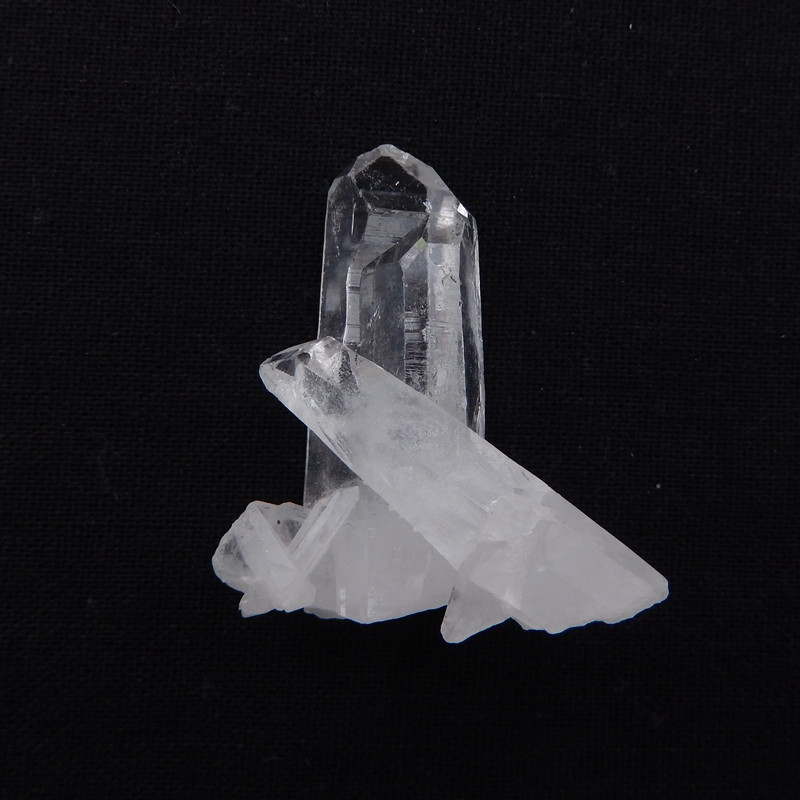
Nije preteško, zar ne?
Prednosti poznavanja Mohsove ljestvice tvrdoće nadilaze stručnjake za gemologiju ili studente. Svaki kupac nakita može održati svoje drago kamenje sjajnim uzimajući u obzir ljestvicu tvrdoće dragog kamenja prilikom pohrane nakita.
Kad jednom počnete s testiranjem, tko zna? Možda ćete otkriti da je gemologija vaš pravi poziv! Ako želite saznati više o testiranju dragog kamenja, saznajte više o četiri osnovna alata za testiranje !
Pronađite svo drago kamenje, pribor i nakit koji će vam trebati ovdje na Gem Rock Auctions!
KUPUJTE NAŠE NAJBOLJE DRAGULJE
Pretražite Gemstone Encyclopedia
Povezane aukcije
Najnoviji članci
Sunčev kamen s duginom rešetkom je vrsta feldspata s tri prekrasna optička efekta uzrokovana prisutnošću raznih inkluzija. Njegov vatreno šareni prikaz i uzorak rešetke čine ga rijetkim kolekcionarskim draguljem!
12th Jan 2026
Thulite is a rare Norwegian gemstone exhibiting a vibrant rosy hue from the zoisite mineral family that is commonly used in jewelry settings and pendants.
6th Jan 2026
Bizmutotantalit je rijedak mineralni dragulj iz obitelji tantalita. Relativno je mekan, što ga čini neprikladnim za umetanje nakita. Međutim, vrijedan je kolekcionarski predmet.
5th Jan 2026
Kategorije članaka
How To's is where you will find helpful articles from gem Rock Auctions on how to cut gemstones, select gemstones and buy gemstones.
9 Članci








